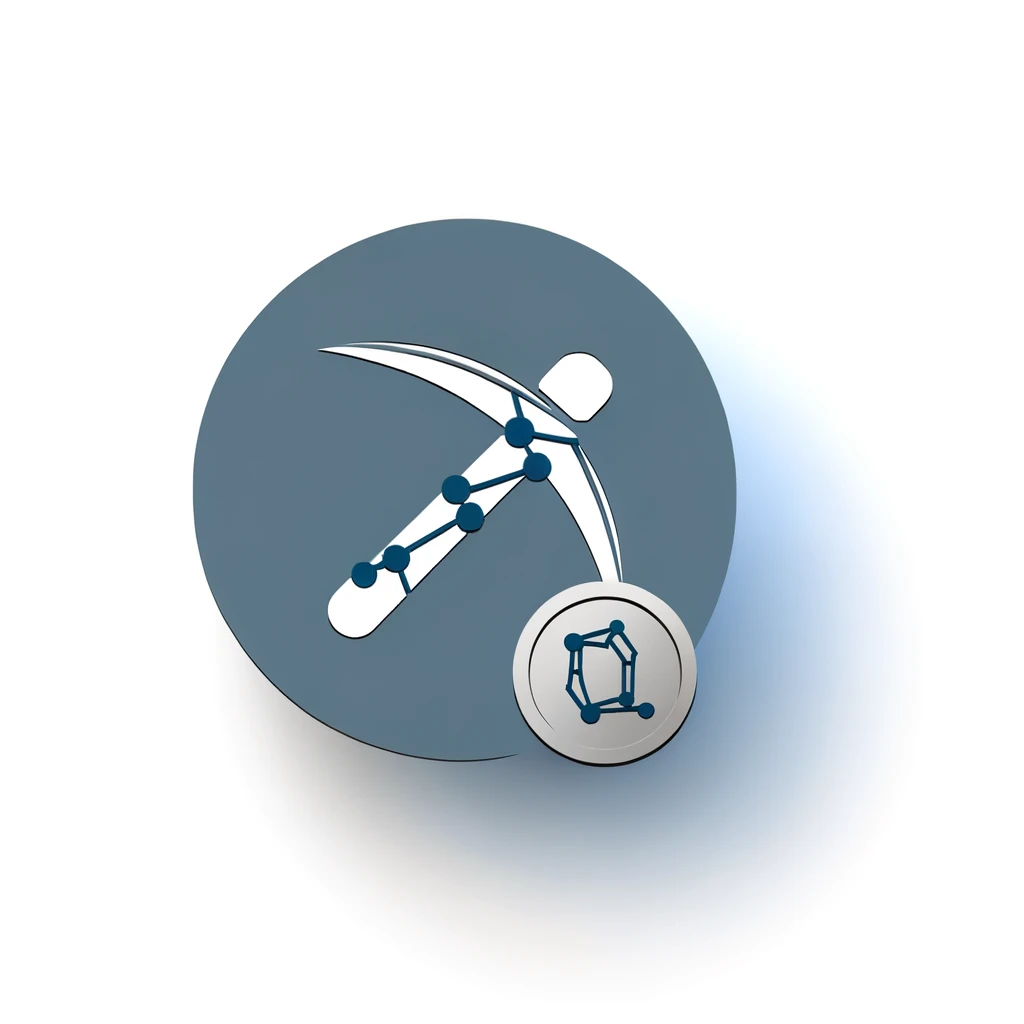Table of Contents:
Understanding Mining Pools: What You Need to Know
Alright, so you’re diving into the world of href="https://mining-provider.com/exploring-radiant-mining-pools-what-you-need-to-know/">mining pools, huh? Well, buckle up because it’s a bit like joining a team sport where everyone’s got their eye on the prize. At its core, a href="https://mining-provider.com/understanding-different-mining-pool-reward-methods/">mining pool is a group of miners who decide to combine their computing power to increase their chances of solving the cryptographic puzzles that are part and parcel of blockchain technology. It’s like pooling your resources for a lottery ticket; the more tickets you have, the better your odds of winning.
Now, why would you want to do this? Well, solo mining can be a bit of a gamble. Sure, if you hit the jackpot, the rewards are all yours, but the odds? Not exactly in your favor. By joining a pool, you get a slice of the pie more frequently, albeit a smaller one. It's about consistency over unpredictability.
Get $500 free Bitcoin mining for a free testing phase:
- Real daily rewards
- 1 full month of testing
- No strings attached
If you choose to buy after testing, you can keep your mining rewards and receive up to 20% bonus on top.
Each pool has its own way of doing things, and they can vary quite a bit. You’ll find pools that offer stable payouts and others that might reward you based on your contribution to the pool’s success. It’s like choosing between a steady paycheck and commission-based earnings. Both have their perks, depending on what you’re comfortable with.
But hey, it’s not all sunshine and rainbows. Being part of a pool means you’re playing by their rules. You’ll have to share your rewards, and sometimes, the fees can be a bit of a downer. Plus, there’s the whole decentralization debate; some folks worry that big pools could end up controlling too much of the network, which isn’t exactly the spirit of cryptocurrency.
So, before you jump in, take a good look at what each pool offers. Consider their reward schemes, fees, and community reputation. It’s like shopping for a new pair of shoes; you want something that fits just right. And remember, in the world of href="https://mining-provider.com/how-to-use-mining-pools-with-trust-wallet/">mining pools, knowledge is power. The more you know, the better your chances of maximizing those rewards.
Choosing the Right Mining Pool: Key Factors to Consider
So, you're on the hunt for the perfect href="https://mining-provider.com/understanding-different-mining-pool-payout-schemes/">mining pool, huh? It's a bit like dating, really. You want to find that perfect match that ticks all your boxes. But what should you be looking for? Let’s break it down.
First up, reputation. You wouldn’t want to date someone with a shady past, right? Same goes for mining pools. Do a little digging (pun intended) to see what other miners are saying. Are they trustworthy? Do they pay out on time? A quick search online can save you a lot of headaches down the road.
Next, consider the fees. Every pool has them, but they vary. Some might take a small percentage of your earnings, while others might have a flat fee. It's crucial to weigh these costs against the potential rewards. Sometimes, a higher fee might be worth it if the pool has a stellar track record.
Then there’s the payout frequency. How often do you want to get paid? Some pools offer daily payouts, while others might be weekly or even monthly. Think about your cash flow needs and choose accordingly.
Don’t forget about the pool size. Larger pools might offer more consistent payouts, but smaller pools can sometimes offer higher rewards. It’s a bit of a balancing act. You need to decide if you’re in it for the long haul or if you’re willing to take a few risks for potentially bigger gains.
Lastly, take a look at the user interface. You’ll be spending a fair amount of time on their platform, so make sure it’s user-friendly. A clunky interface can be a real drag, especially if you’re new to the game.
In the end, choosing the right href="https://mining-provider.com/a-beginner-s-guide-to-joining-a-mining-pool-on-nicehash/">mining pool is all about aligning with your goals and comfort level. Do your homework, weigh the pros and cons, and trust your gut. After all, in the world of mining, every decision counts.
Different Reward Methods in Mining Pools
Alright, let’s get into the nitty-gritty of reward methods in mining pools. It's like choosing a payment plan for your phone; each has its quirks and benefits. Understanding these can really help you make the most out of your mining efforts.
First up, we have the Pay-per-Share (PPS) method. This one's pretty straightforward. You get paid for each share you contribute, regardless of whether the pool finds a block. It’s like getting a steady paycheck, rain or shine. The downside? The pool fees can be a bit higher to cover the risk they’re taking on.
Then there’s the Proportional (PROP) method. Here, you earn rewards based on the number of shares you contribute to the total pool shares when a block is found. Think of it as a profit-sharing scheme. It’s fair, but your earnings can be a bit unpredictable since they depend on when the pool actually finds a block.
Now, the Pay-per-Last-N-Shares (PPLNS)) is a bit more complex. Your payout depends on the number of shares you contributed during a specific window of time, often several blocks. It’s designed to prevent pool hopping, which is when miners jump from pool to pool chasing quick wins. With PPLNS, loyalty can pay off over time.
There’s also the PPS Plus (PPS+) method, which combines the stability of PPS for block rewards with the variability of PPLNS for transaction fees. It’s like having your cake and eating it too, offering a balance between steady income and potential bonuses.
Lastly, the Full Pay-per-Share (FPPS) model takes it a step further by applying the PPS method to both block rewards and transaction fees. It’s all about consistency, ensuring you know exactly what you’re getting each time.
Choosing the right reward method is all about your risk tolerance and financial goals. Whether you prefer the stability of PPS or the potential highs of PPLNS, there’s a method out there that’ll fit your style. So, weigh your options and pick the one that aligns with your mining strategy.
Strategies for Maximizing Your Mining Pool Earnings
Alright, so you’re ready to roll up your sleeves and get the most out of your mining pool experience. It’s not just about picking the right pool; it’s about playing your cards right once you’re in. Here are some strategies to help you maximize those earnings.
First things first, optimize your hardware. It might sound obvious, but ensuring your mining rig is running at peak performance can make a world of difference. Regular maintenance, updates, and cooling solutions can keep your equipment humming along efficiently, squeezing out every bit of hash power.
Next, consider diversifying your mining activities. Instead of putting all your eggs in one basket, you might want to spread your efforts across multiple pools or even different cryptocurrencies. This can help balance out the highs and lows, giving you a more stable income stream.
Another tactic is to monitor pool performance regularly. Pools can change over time, and what was once a top performer might start lagging. Keep an eye on metrics like block discovery rates and payout frequencies. If things start to dip, don’t be afraid to switch pools.
Don’t underestimate the power of community engagement. Many pools have forums or chat groups where miners share tips and tricks. Being active in these communities can provide valuable insights and sometimes even lead to collaborative opportunities.
Lastly, stay informed about market trends. Cryptocurrency values can be volatile, and understanding market dynamics can help you make informed decisions about when to mine or when to hold back. Timing can be everything in this game.
In the end, maximizing your mining pool earnings is a mix of strategy, vigilance, and sometimes a bit of luck. Stay sharp, keep learning, and you’ll be well on your way to making the most of your mining endeavors.
Avoiding Common Pitfalls in Mining Pool Participation
Alright, let’s talk about the not-so-glamorous side of mining pools. Like any venture, there are pitfalls you’ll want to sidestep to keep your mining journey smooth and profitable. Here’s what to watch out for.
First up, don’t ignore the fine print. It’s easy to get swept up by the promise of high rewards, but make sure you read the terms and conditions of any pool you join. Hidden fees or unfavorable payout terms can sneak up on you if you’re not careful.
Another common mistake is putting all your trust in one pool. Even the most reputable pools can face technical issues or changes in management that might not align with your interests. It’s wise to have a backup plan or be ready to switch if things go south.
Then there’s the issue of overlooking security. Mining pools can be targets for cyber attacks, and if a pool doesn’t have robust security measures, your earnings could be at risk. Look for pools that prioritize security and have a track record of protecting their miners.
Don’t fall into the trap of chasing trends blindly. Just because a pool is popular doesn’t mean it’s the best fit for you. Do your research and choose a pool based on your specific needs and goals, not just what’s trending.
Lastly, avoid neglecting your own setup. It’s easy to blame the pool if your earnings aren’t what you expected, but sometimes the issue lies closer to home. Regularly check your hardware and software to ensure everything is running smoothly.
By steering clear of these common pitfalls, you’ll be better positioned to enjoy a rewarding and less stressful mining experience. Keep your wits about you, and you’ll navigate the mining pool waters like a pro.
Real-Life Examples: Successful Mining Pool Strategies
Let's dive into some real-life tales from the mining world, where strategy meets success. These stories highlight how miners have leveraged smart tactics to make the most of their pool participation.
One miner, let's call him Alex, found success by diversifying his efforts. Instead of sticking to one pool, Alex spread his resources across several pools. This approach helped him balance the ups and downs of individual pool performance, ensuring a more consistent income stream. By keeping an eye on each pool's performance metrics, he was able to shift resources as needed, optimizing his earnings.
Then there's the story of Lisa, who took a community-focused approach. Lisa joined a smaller, community-driven pool where active participation and feedback were encouraged. By engaging with other miners and sharing insights, she not only improved her own strategies but also contributed to the pool's overall success. This collaborative environment fostered innovation and helped the pool remain competitive.
Another example is Mark, who excelled by staying ahead of market trends. Mark kept a close watch on cryptocurrency market fluctuations and adjusted his mining focus accordingly. When certain coins showed potential for growth, he shifted his resources to pools mining those specific cryptocurrencies. This proactive approach allowed him to capitalize on emerging opportunities and maximize his returns.
Finally, consider Sarah, who prioritized security and reliability. She carefully selected pools with a strong emphasis on security protocols and a proven track record of stability. By avoiding pools with frequent downtime or security breaches, Sarah ensured that her mining efforts were consistently rewarded without unexpected disruptions.
These real-life examples demonstrate that success in mining pools often comes down to strategic thinking, adaptability, and community engagement. By learning from these stories, you can refine your own approach and enhance your mining journey.
The Future of Mining Pools: Trends and Predictions
Peering into the crystal ball of href="https://mining-provider.com/step-by-step-guide-to-conducting-a-mining-pool-test/">cryptocurrency mining, the future of mining pools is as dynamic as the market itself. With technology and trends evolving at breakneck speed, what can we expect in the coming years?
First off, there's a strong push towards decentralization. As concerns about centralization grow, we might see a shift towards more decentralized mining pool structures. This could involve peer-to-peer networks where miners have more control and transparency, reducing the risk of any single entity wielding too much power.
Another trend on the horizon is the integration of artificial intelligence and machine learning. These technologies could revolutionize how pools operate, optimizing resource allocation and predicting market trends with greater accuracy. Imagine a pool that automatically adjusts its strategy based on real-time data, maximizing efficiency and profits for its members.
We might also witness an increase in green mining initiatives. As environmental concerns take center stage, mining pools could adopt more sustainable practices, such as utilizing renewable energy sources or improving energy efficiency. This shift not only benefits the planet but could also attract environmentally conscious miners.
Moreover, the rise of multi-coin mining pools is likely. These pools allow miners to switch between different cryptocurrencies based on profitability, offering greater flexibility and potential earnings. As more coins enter the market, this adaptability will become increasingly valuable.
Lastly, regulatory developments could play a significant role in shaping the future of mining pools. As governments around the world grapple with how to regulate cryptocurrencies, pools may need to adapt to new legal frameworks, impacting how they operate and distribute rewards.
In conclusion, the future of mining pools is poised for exciting changes. By staying informed and adaptable, miners can navigate these trends and continue to thrive in the ever-evolving landscape of cryptocurrency mining.
FAQ on Cryptocurrency Mining Pool Optimization
What is a mining pool?
A mining pool is a group of cryptocurrency miners who combine their computational power to increase the likelihood of successfully mining blocks and sharing the rewards based on individual contributions.
How do various mining reward methods work?
Different mining reward methods include Pay-per-Share (PPS), Proportional (PROP), Pay-per-Last-N-Shares (PPLNS), and more. Each method distributes rewards differently, balancing between stable payouts and reward potential based on effort and time.
What are the advantages of joining a mining pool?
Joining a mining pool increases success rates in mining, reduces individual costs through shared rewards, and provides equal opportunities for miners with smaller computational resources to earn consistent payouts.
How can I maximize my earnings in a mining pool?
To maximize earnings, miners should choose pools with favorable reward methods, maintain optimal hardware performance, diversify mining activities across pools and currencies, and engage with mining community insights.
What should I consider when choosing a mining pool?
When selecting a mining pool, consider factors such as the pool's reputation, fees, payout frequency, size, user interface, and community engagement to ensure alignment with your mining goals and risk tolerance.






